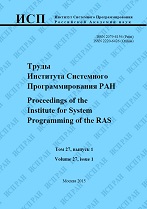|
This article is cited in 1 scientific paper (total in 1 paper)
Modeling of coupled heat transfer in microchannels in OpenFOAM
Е. S. Baymetova, M. E. Hval'ko, A. Yu. Armyanin
Izhevsk State Technical University
Abstract:
In this paper, a numerical simulation of forced convective heat transfer in a silicon microchannel heat sink has been performed using the OpenFOAM tools. A single-phase fluid - water - was used as a heat transfer medium. The model of microchannel heat sink is represented as silicon substrate with length 10 mm, with rectangular microchannels 57 microns wide and 180 microns deep located along the full length of the heat sink. A comparative analysis in the form of cross-platform verification of the numerical results obtained with data from third-party authors was performed. The analysis of the obtained data has shown a good convergence of the study results and the possibility of using the OpenFOAM package as a computational environment for the numerical simulation of the physical processes occurring in channel radiators.
Keywords:
numerical simulation, microchannel, heat exchange, comparative analysis
Citation:
Е. S. Baymetova, M. E. Hval'ko, A. Yu. Armyanin, “Modeling of coupled heat transfer in microchannels in OpenFOAM”, Proceedings of ISP RAS, 34:5 (2022), 205–214
Linking options:
https://www.mathnet.ru/eng/tisp731 https://www.mathnet.ru/eng/tisp/v34/i5/p205
|

| Statistics & downloads: |
| Abstract page: | 40 | | Full-text PDF : | 27 |
|




 Contact us:
Contact us: Terms of Use
Terms of Use
 Registration to the website
Registration to the website Logotypes
Logotypes









 Citation in format
Citation in format 
